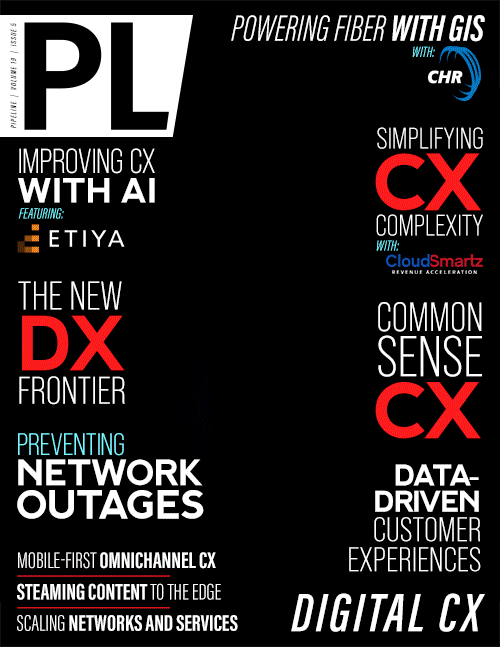Letter from the Editor

Times, they are a-changin’. Artificial Intelligence (AI) is here and it’s changing, well, just about everything. This should come as no surprise, as the concept of AI was first developed early last century, and by the end of the century IBM’s Deep Blue supercomputer trounced chess grandmaster and world champion Gary Kasparov in a devastating defeat. In fact, Pipeline has been covering the real-world applications of AI as far back as 2017, and machine learning even longer.
But today AI is doing a lot more than playing board games. And, if there was any doubt in the viability of AI as an enterprise technology game changer, it should have been put to bed this year with Microsoft’s 10-billion-dollar investment in OpenAI’s ChatGPT to integrate AI across its cloud, productivity, and search solutions.
AI is capable of consuming mountains of data near instantaneously, and can create articles, videos, images, art and much more. As a technology, AI has and will transform our lives, businesses, and the world. In fact, there are many nearly fully autonomous business cases that leverage AI now. AI is powering things like businesses that leverage Facebook ads to serve up products to target audience segments, and then handle production, fulfillment, and delivery entirely through third parties—no people required. Others are using AI to sift through millions of data points to find pricing arbitrage between online commerce platforms—like eBay and Amazon—that resellers can turn into profits by tracking price and demand to buy on one and sell on the other. In the world of finance, AI is being used to read and write news headlines, and analyze economic factors, moving averages and other technical indicators to buy and sell billions of dollars of stock in completely automated transactions. It’s only a matter of time before we see AI as a business, creating businesses, and then automating them.
The rise of AI has put in motion a monumental industrial, organizational, technological, and human transformation. It’s happening simultaneously with other major shifts; as customer demands for connectivity, entertainment, content, mobility, and personalization are placing ever-increasing pressure on networks and services. It’s also occurring during a difficult and unpredictable economic time that is forcing companies to be more cost-effective, find new and more efficient ways of working, and to contend with explosive growth in data volumes amid the ever-present pressure to derive real-time insights. All of above play squarely into AI’s strength: the ability to look at trillions of bytes of data and know immediately the right decision to make. It's one of the reasons AI is accelerating at a tremendous speed, blowing the doors off Moore’s law – doubling in computational power every 3.4 months – versus previously as long as two years.
AI is ascending. It’s capable of doing much of what humans can do, and many things humans can’t. Humans are also expensive and fallible in ways that AI is not. People get sick, have emotions, make mistakes, get tired, and are anchored to volumes of labor, management, and regulatory requirements. So where to humans fit into the future?
Humans are good at being human. Humans are caring, compassionate and understanding. We grasp the human context that computers can’t. In this brave new AI-enabled world, humans and technology can complement each other to leverage our individual strengths and overcome our respective weaknesses. This symbiosis is transformative for business looking to provide a superior customer experience—and it’s what makes this issue of Pipeline so relevant.
In this issue of Pipeline, we investigate how technology is transforming the customer experience. IntelePeer peers into the new CX frontier by looking at Frontier Airlines’ shift to an all-digital customer experience. Qwilt contends that content is still king, using Superbowl LVII as a case study for bringing content closer to customers. Horisen explores the importance of mobile customers and personalizing omnichannel experiences. Pipeline’s technology spotlight illustrates how AI is being used for improving customer experience (CX) with Etiya, and the roles for AI and humans in the future. Oracle explains how data-driven CX can design offers that increase the lifetime value of customers. Noviflow reveals how CSPs can meet the insatiable demand for connectivity and service innovation. CHR Solutions shares how geospatial data tools are helping satisfy the demand for bigger and better broadband by accelerating fiber deployments. Pipeline’s contributing editor Carol Borghesi delves into common-sense CX and the distinct difference between CX and DX. CloudSmartz demonstrates how to accelerate revenue by simplifying CX complexity, and Catchpoint illustrates how to prevent network outages to improve CX. All this plus the latest enterprise and communications technology news and more.
We hope you enjoy this and every issue of Pipeline.
Scott St. John
Managing Editor
Pipeline



















